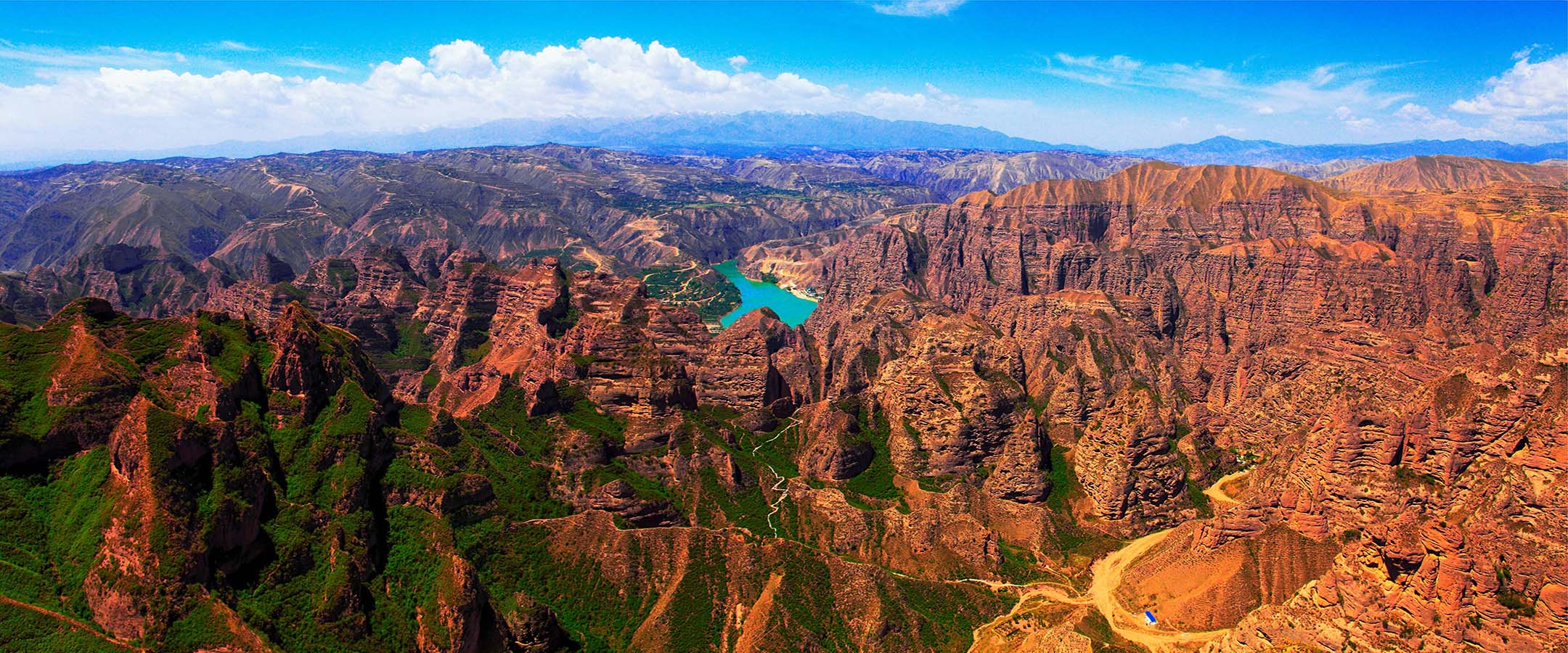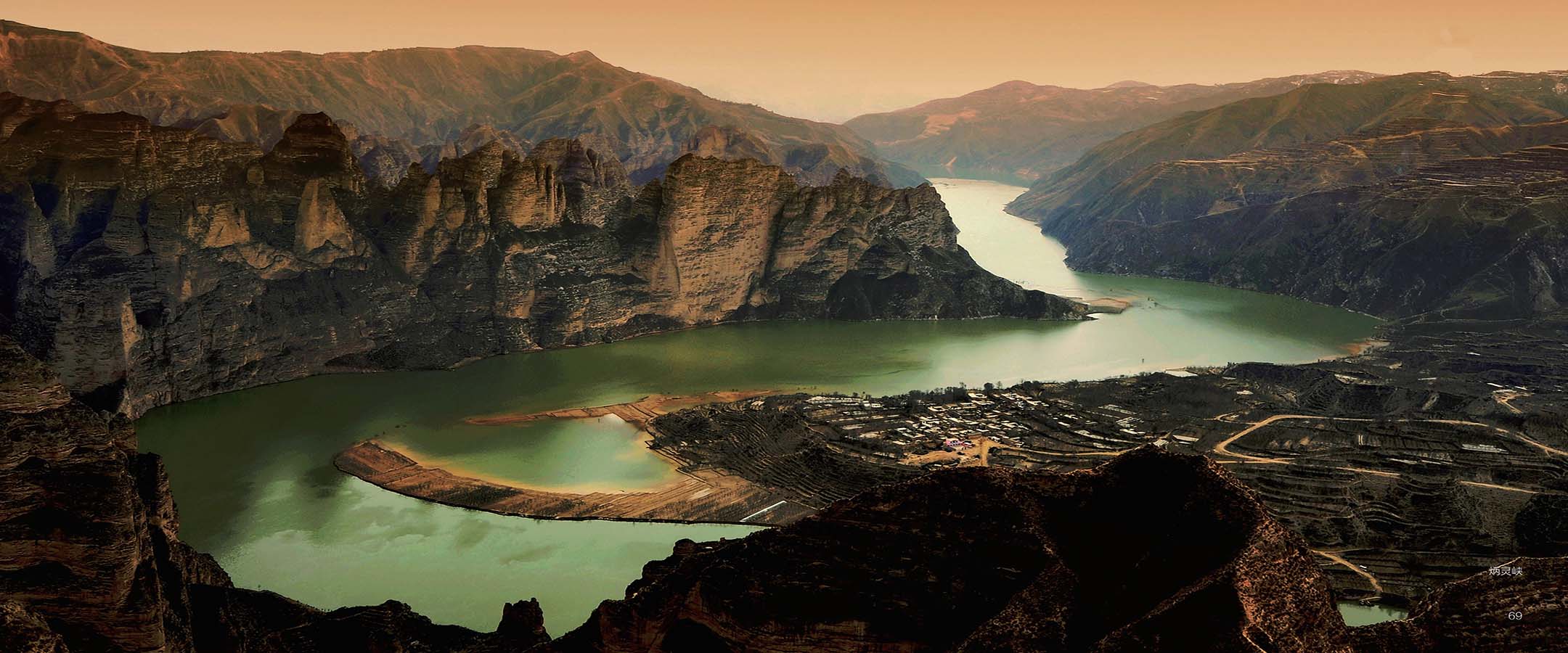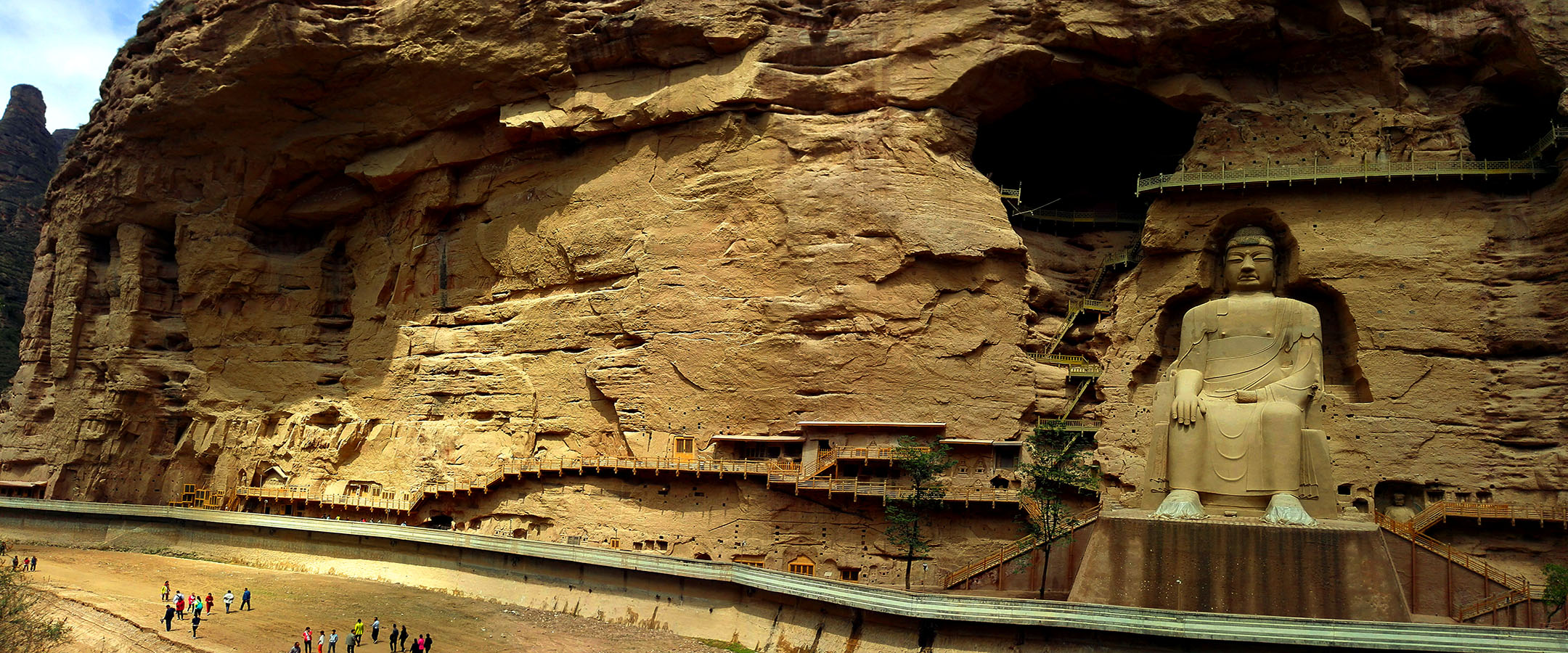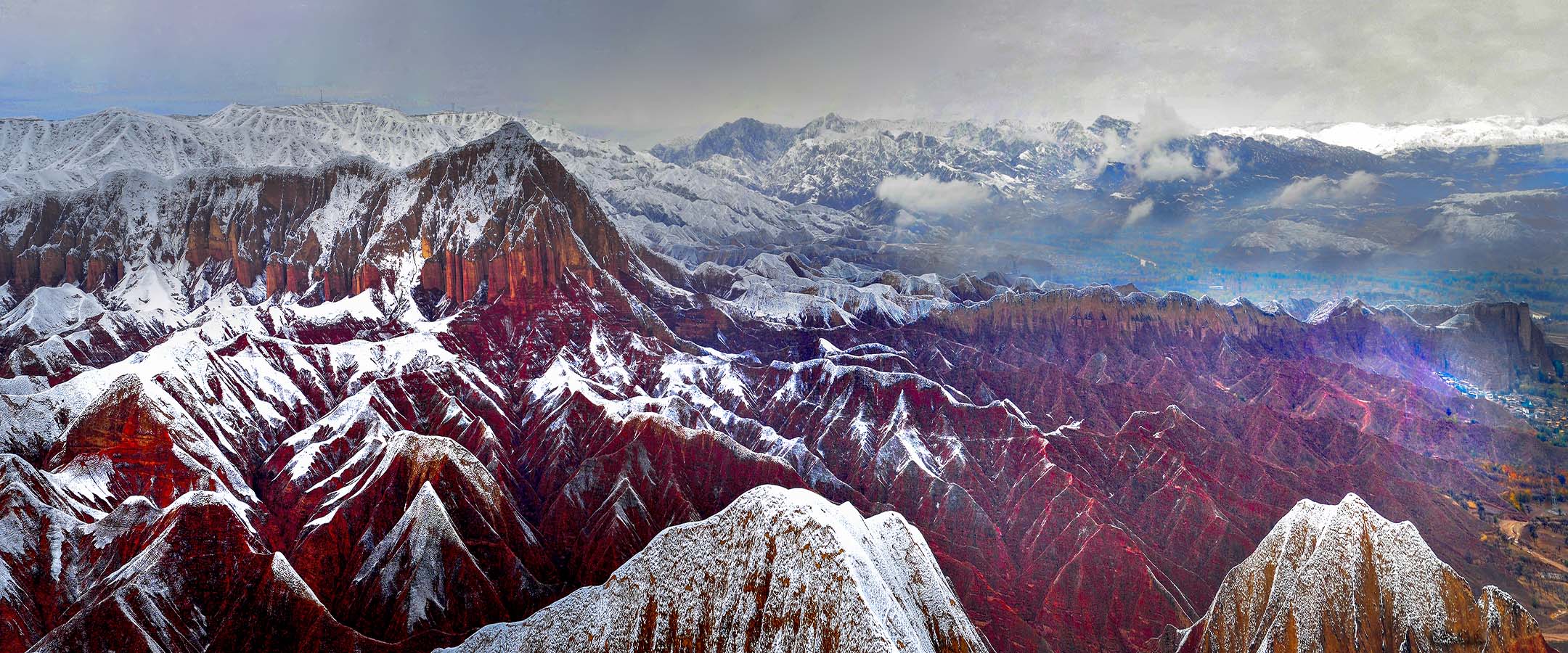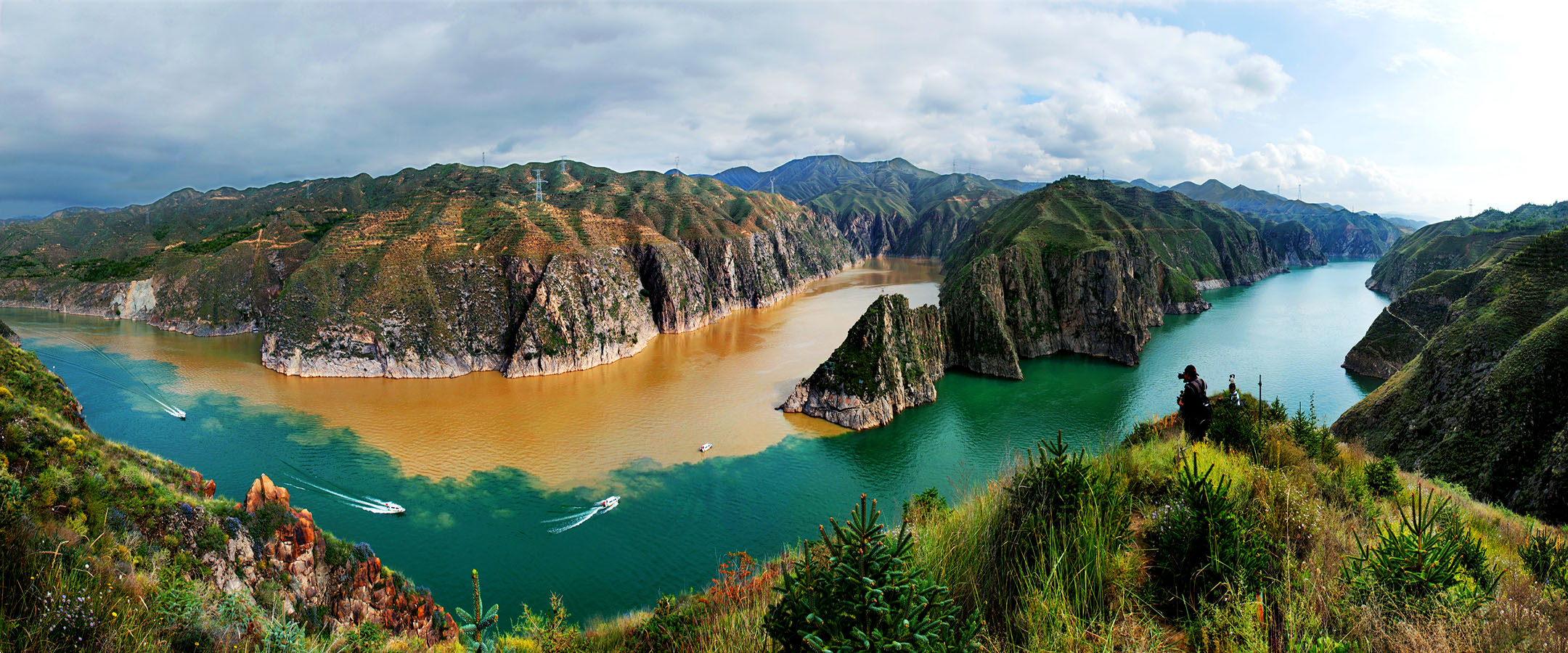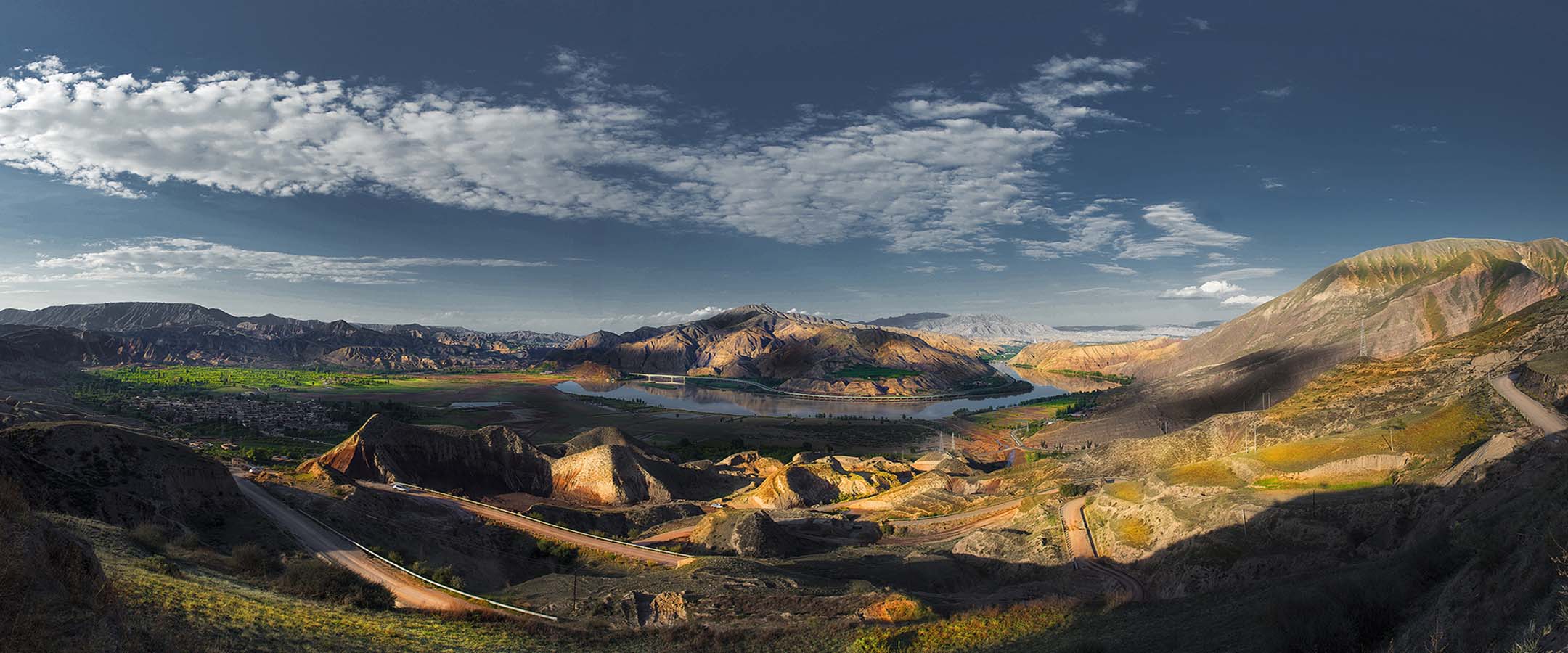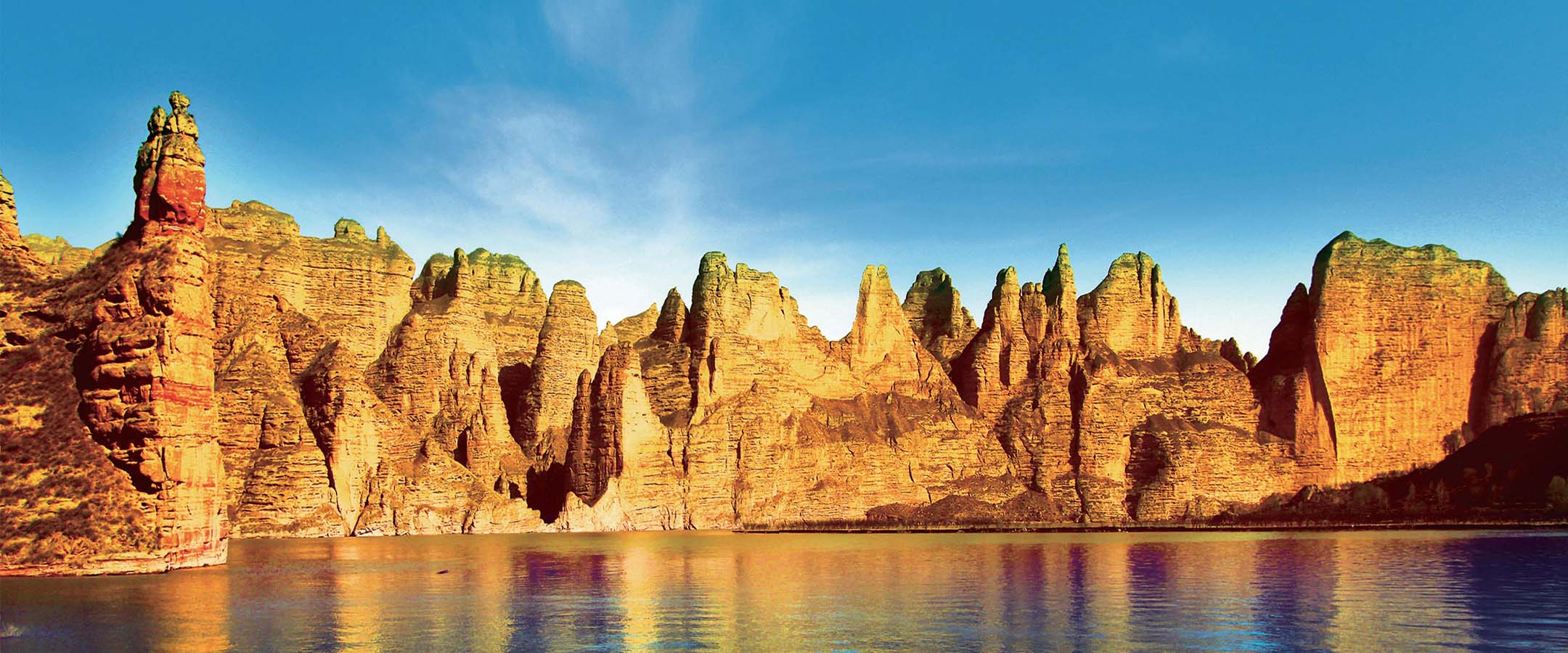
临夏世界地质公园位于青藏高原和黄土高原过渡地带,地质遗迹类型丰富。以古生物化石及其赋存地层、丹霞地貌、黄河河流地貌等地质遗迹为特色。其中刘家峡足迹化石群的恐龙(兽脚类、蜥脚类、鸟脚类)、翼龙和鸟类足迹组合,以及发育了巨犀、铲齿象、三趾马和真马四个动物群的和政哺乳动物化石与赋存地层 ,具有国际地学价值。分布于地质公园东北部黄河流域的刘家峡足迹化石,产出于下白垩统河口组地层中,以恐龙(兽脚类、蜥脚类、鸟脚类)、翼龙和鸟类足迹最具代表性,已发现至少有 9 种古脊椎动物足迹,是中国甘肃省首次发现的中生代脊椎动物足迹,也是中国最重要的足迹化石之一。该处已发现产出 150 组共 1831 枚足迹,其中发育有最大的一组蜥脚类足印,其后足印长 150厘米,单体规模为世界之最。该处大量平行的鸟脚类动物足迹则表明恐龙的群居行为。这里还发育一处正在加速奔跑的蜥脚类动物足迹,是世界已有记录中少见的。且鸟脚类与蜥脚类共生的足迹化石在亚洲和全球范围内较为罕见。这个化石点是人工、科学挖掘出来的,且开挖以来就进行了原地保护,所以整个足迹化石群保存良好,没有受到任何风化的影响。这里的足迹化石是研究恐龙生理和生活习性的珍贵材料,同时能够为研究恐龙生活环境和生物类别提供重要依据,为进一步研究恐龙的类别和研究足印遗迹与遗迹生物之间的关系提供重要线索。现今地质公园内发现的新生代哺乳动物化石点有近百个,化石标本超过 3 万件。这些哺乳动物化石反映临夏地质公园自新生代以来,哺乳动物至少经历了 4 个动物群的更替:晚渐新世巨犀动物群,以犀类占绝对优势,捕猎性的动物还相当原始;中中新世铲齿象动物群,动物群组成结构发生了明显的变化,在青藏高原南北两侧的化石差异明显,反映出青藏高原在中中新世已经隆升到足以障碍动物交流的高度;晚中新世三趾马动物群,表明最早的三趾马跨越白令陆桥从北美迁徙到亚洲;早更新世真马动物群,动物组成非常特殊,小哺乳动物特别少,而食肉类化石特别多。临夏地质公园这些多门类的哺乳动物化石为研究其分类位置、个体发育、形态变异、系统演化、地质时代、古地理、古气候、古生态等提供了坚实的证据。富含新生代哺乳动物化石的连续剖面也是研究青藏高原隆升历史不可多得的证据,是欧亚大陆最完整的晚新生代陆相生物地层之一,对全球范围内同时代地层对比研究具有重要意义。此外,中国第二大河——黄河穿越了临夏地质公园,在公园内形成了由炳灵峡、刘家峡及盐锅峡组成的黄河三峡。分布于黄河两岸的白垩系砂砾岩经长期的侵蚀切割,形成了造型各异、地貌类型齐全的丹霞地貌。世界文化遗产——距今已有 1600 多年的炳灵寺石窟开凿于黄河岸边炳灵丹霞崖壁之中,成为了人文古迹与地质遗迹相融合的典范。临夏地质公园所在地区也是中华文明的重要发源地之一,分布有多处古文化遗址点,是“彩陶之乡”;这里曾是古丝绸之路南道要冲,素有“西部旱码头”的美誉。以东乡族和保安族等为代表的少数民族,形成了公园内特色的民族文化。地质公园也是世界非物质文化遗产——民歌“甘肃花儿”的重要发源地,2004 年地质公园内的永靖被联合国教科文组织确定为“民歌考察采录地”。公园中部的八坊十三巷是集民族文化、建筑艺术、地方乡居为一体的知名人文景观。临夏地质公园资源具有极高的科学价值、美学观赏价值以及旅游开发价值,集科学性、稀有性和独特性于一体。同时公园文化底蕴厚重、民族特色浓厚,自然风光优美。因此临夏地质公园会是人们进行科学考察、科普教育和休闲娱乐、领悟多民族文化的重要场所。
Located at the transitional zone between the Qinghai-Tibet Plateau and the Loess Plateau, Linxia UNESCO Global Geopark is rich in diverse geoheritage. The most prominent geological highlights are abundant palaeontological fossils and their strata in the geopark. The palaeontological fossils can be divided into two major categories. One is the Liujiaxia footprint fossils distribute in the Yellow River basin of the northeast geopark. Represented by dinosaurs (theropod, sauropod, ornithopod), pterosaurs and birds tracks, Liujiaxia footprint fossils were unearthed in Hekou Formation of Lower Cretaceous. At least nine kinds of palaeovertebrates’ footprints have been discovered in the geopark. It is the first time footprints of Mesozoic vertebrates were discovered in Gansu province, China. A large number of parallel ornithopod tracks evidence that dinosaurs lived in groups. There are tracks of a running sauropod, which is rare in world’s records. Tracks of symbiotic ornithopod and sauropod are rare in Asia even globally. The site was excavated manually and scientifically and was protected since the excavation. So the whole assemblages have been well preserved without weathering. The fossil footprints are precious materials for studying the physiology and living habits of dinosaurs. They provide important basis for studying the living environment and biological categories of dinosaurs and clues for further studying the categories of dinosaurs and the relationship between footprints and organisms.The other is Hezheng Cenozoic mammalian fossils in the South of the Geopark. At present, there are nearly 100 fossil sites of Cenozoic mammals found in the geopark and fossil specimens are more than 30,000 pieces. These mammalian fossils reflect that since the Cenozoic, effected by the uplift of the Qinghai-TibetPlateau, the mammalian fauna had been replaced at least 4 times. Rhinoceros constituted the majority of the Indricotherium Fauna in the late Oligocene and predators were quite primitive. Great changes took place in the composition and structure of the middle Miocene Platybelodon fauna. And the fossil’s difference between the north and south sides of the Qinghai-Tibet Plateau reflects that the elevation of Qinghai-Tibet Plateau had hindered animal’s communication in the middle Miocene. The late Miocene Hipparion fauna indicates that the earliest Hipparion migrated from North America to Asia by acrossing the Bering Land Bridge. The composition of the early Pleistocene Equus fauna is typical. Small mammalian is few and fossils of carnivore are rich. These mammalian fossils in Linxia Geopark provide key evidence for studying the classification, ontogenesis, heteromorphosis, phylogeny, geological age, paleogeography, paleo-climate and paleoecology. The late Cenozoic stratigraphic sequence is the most complete late Cenozoic terrestrial sections in Eurasia, which evidence the uplift history of the Qinghai-Tibet Plateau and is of great significance for the study of contemporaneous stratigraphic correlation worldwide. Yellow River, the second longest river in China, crosses Linxia Geological Park and forms Three Gorges composed of Bingling Gorge, Liujia Gorge and Yanguo Gorge.and Yanguo Gorge. The Danxia landform dominated by Cretaceous sandy conglomerates distributes along the both sides of Yellow River, with different shapes and complete geomorphologic types after long-term erosion and cutting. World Cultural Heritage -- the Bingling Temple Grottoes with a history of more than 1600 years, built on the cliff of Danxia landform on the bank of the Yellow River, are a good example of combination between cultural heritage and geoheritage. Linxia Geopark is one of the important birthplaces of Chinese Civilization, with many ancient cultural relics. Because of being an important station of southern thoroughfares of ancient Silk Road, Linxia is known as the Western Land Trading Centre, and the home of Chinese painted pottery. Represented by Dongxiang and Baoan minorities, minorities have formed a distinctive local culture in the Geopark. The geopark is also the cradle of folk song Hua’er, a kind of World Intangible Cultural Heritage. In 2004, Yongjing in the geopark was identified as the “Place for folk song investigation and collection” by UNESCO. Ba Fang Shi San Hang( Bafang thirteen lanes) within the geopark is famous cultural landscape combing local culture, architectural art with villeggiatura.Integrating science, rareness and uniqueness, Linxia Geopark is of high scientific, aesthetic and tourism development value. Moreover, the geopark boasts profound culture, strong ethnic feature and captivating natural scenery. Therefore, Linxia Geopark will be an ideal place to conduct scientific investigation and education, enjoy recreation and entertainment and experience diverse ethnic cultures.

